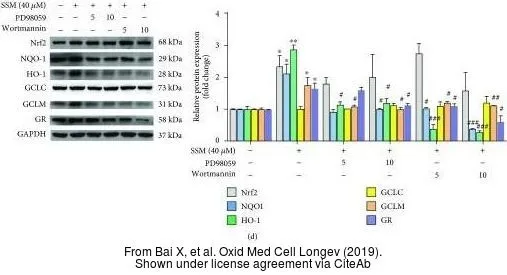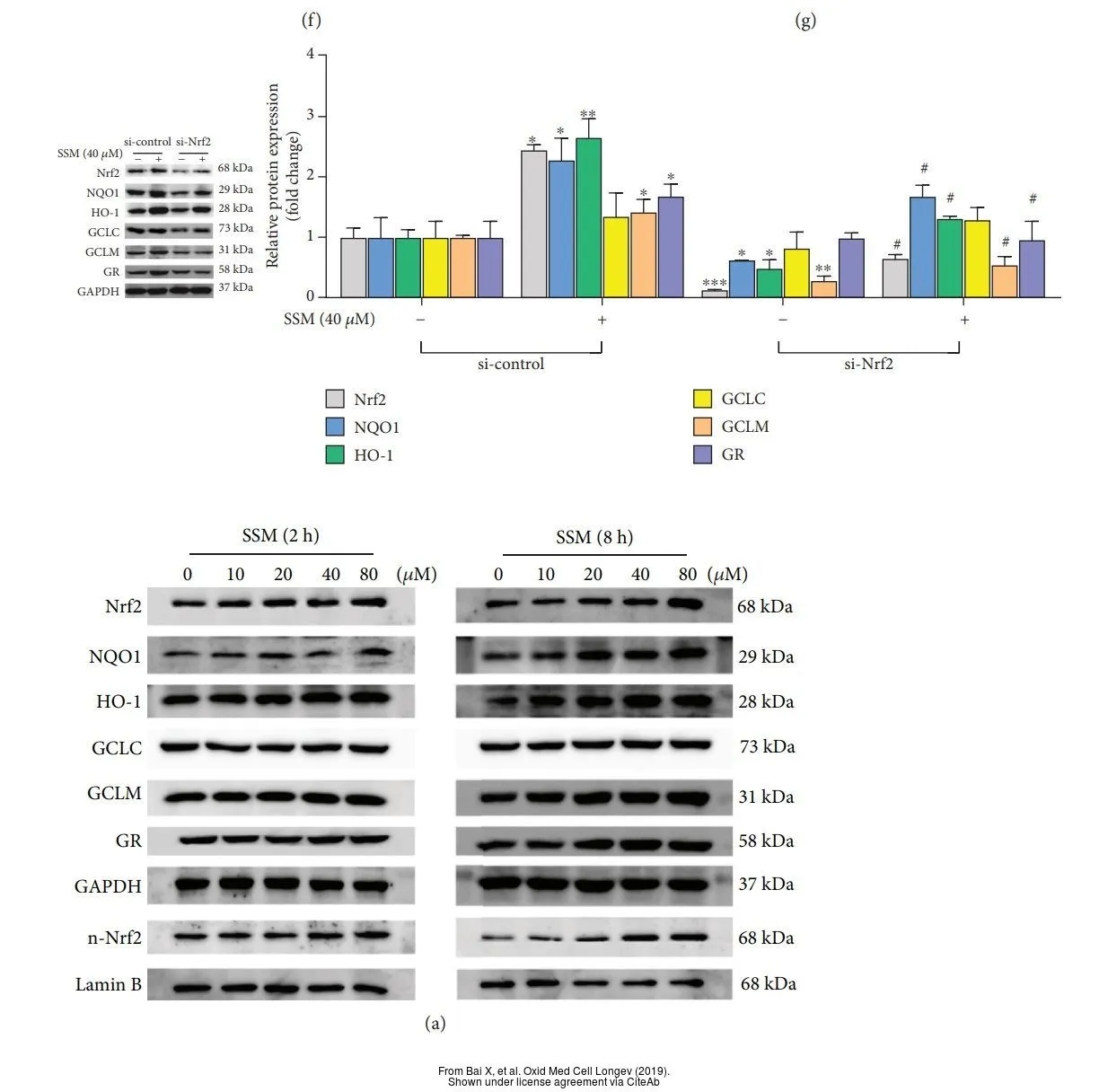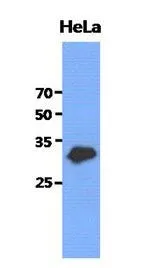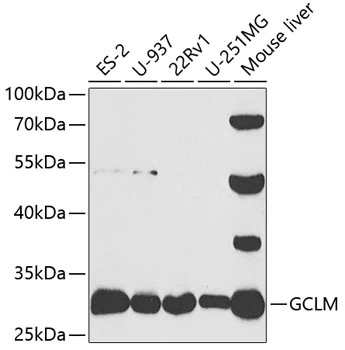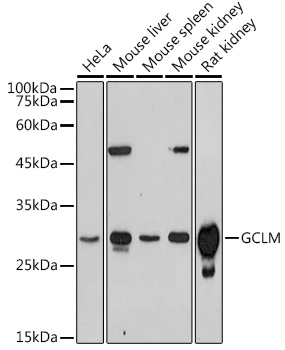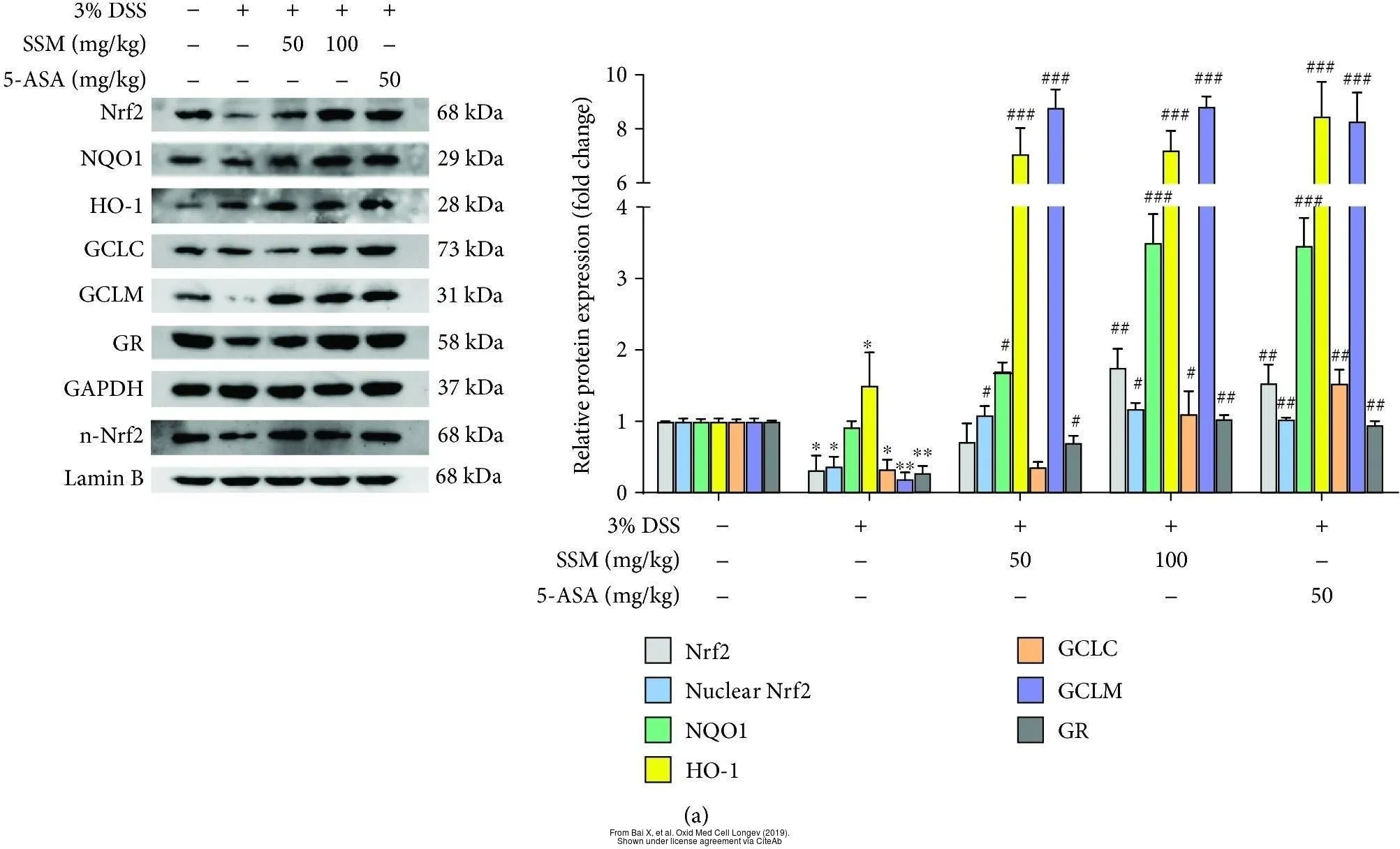
The data was published in the journal Oxid Med Cell Longev in 2019. PMID: 31534619
GCLM antibody [AT2D12]
GTX53719
ApplicationsWestern Blot, ELISA
Product group Antibodies
TargetGCLM
Overview
- SupplierGeneTex
- Product NameGCLM antibody [AT2D12]
- Delivery Days Customer9
- Application Supplier NoteThe antibody has been tested by ELISA, Western blot analysis to assure specificity and reactivity. Since application varies, however, each investigation should be titrated by the reagent to obtain optimal results. Recommended dilution range for Western blot analysis is 1:3000.
- ApplicationsWestern Blot, ELISA
- CertificationResearch Use Only
- ClonalityMonoclonal
- Clone IDAT2D12
- Concentration1 mg/ml
- ConjugateUnconjugated
- Gene ID2730
- Target nameGCLM
- Target descriptionglutamate-cysteine ligase modifier subunit
- Target synonymsGLCLR, glutamate--cysteine ligase regulatory subunit, GCS light chain, GSC light chain, gamma-ECS regulatory subunit, gamma-glutamylcysteine synthetase regulatory subunit, glutamate-cysteine ligase (gamma-glutamylcysteine synthetase), regulatory (30.8kD), glutamate-cysteine ligase modifier subunit delta2 alternative splicing, glutamate-cysteine ligase regulatory protein
- HostMouse
- IsotypeIgG1
- Protein IDP48507
- Protein NameGlutamate--cysteine ligase regulatory subunit
- Scientific DescriptionGlutamate-cysteine ligase, also known as gamma-glutamylcysteine synthetase, is the first rate limiting enzyme of glutathione synthesis. The enzyme consists of two subunits, a heavy catalytic subunit and a light regulatory subunit. Gamma glutamylcysteine synthetase deficiency has been implicated in some forms of hemolytic anemia. Alternative splicing results in multiple transcript variants encoding different isoforms. [provided by RefSeq, Apr 2015]
- Storage Instruction-20°C or -80°C,2°C to 8°C
- UNSPSC12352203
References
- Sesamin Enhances Nrf2-Mediated Protective Defense against Oxidative Stress and Inflammation in Colitis via AKT and ERK Activation. Bai X et al., 2019, Oxid Med Cell LongevRead more

